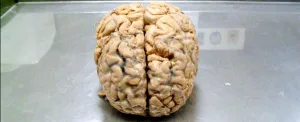Unraveling the Mystery of Chronic Pain: Is it All in Your Head?
Chronic pain can be a debilitating condition, impacting every aspect of life. But what if the source of that persistent ache isn’t what you think? Groundbreaking research suggests that chronic pain may stem from “memories of pain” stored within the brain, rather than ongoing physical injury.
The Brain’s Role in Chronic Pain
For years, the prevailing understanding has been that chronic pain signals an ongoing problem in the body. However, some scientists are now proposing a different perspective. They believe that in many cases, the brain essentially gets stuck in a pain loop, continuing to generate pain signals even after the initial injury has healed.
How Does This Happen?
The brain is incredibly adaptable, and it can learn to associate certain signals with pain. Over time, these associations can become so strong that the brain starts producing pain even without a clear trigger. Think of it like a phantom limb sensation, where someone feels pain in a limb that is no longer there. In chronic pain, the brain may be replaying “memories of pain.”
Differentiating Between Injury and Brain-Based Pain
The challenge lies in distinguishing between pain caused by an actual physical problem and pain generated by the brain. This requires careful assessment and a thorough understanding of the patient’s medical history.
Factors to Consider:
- Duration of Pain: Has the pain persisted for longer than expected for the initial injury to heal?
- Response to Treatment: Is the pain unresponsive to traditional treatments that target the site of injury?
- Psychological Factors: Are there underlying psychological factors, such as stress, anxiety, or depression, that may be contributing to the pain?
Potential Treatment Approaches
If chronic pain is indeed rooted in the brain, then treatments need to shift focus. Rather than solely addressing the physical symptoms, therapies should target the neural pathways involved in pain processing.
Promising Strategies:
- Cognitive Behavioral Therapy (CBT): Helps patients change their thoughts and behaviors related to pain.
- Mindfulness Meditation: Promotes awareness and acceptance of pain, which can reduce its impact.
- Pain Reprocessing Therapy: Aims to reframe the way the brain perceives pain signals.
- Neurofeedback: Trains individuals to regulate their brain activity.
Final Words
The concept of chronic pain as “memories of pain” offers a new avenue for understanding and treating this complex condition. By recognizing the brain’s central role, healthcare professionals can develop more effective strategies to help patients break free from the cycle of chronic pain and regain control of their lives. While further research is needed, this approach holds significant promise for the millions who suffer from persistent pain.



+ There are no comments
Add yours